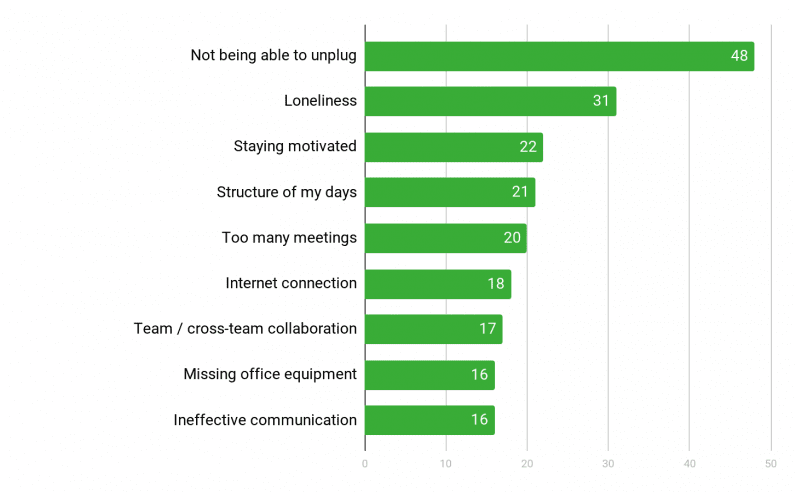
One of the big questions facing professionals right now is how do you, as a CEO or a business leader, maintain the company culture and keep your team’s morale high, when everyone is working remotely?
This is a critical question since culture — as fundamental it is for a company’s success — is a fragile thing.
In an Upwork survey, 30% of hiring managers reported reduced team cohesion as one of the biggest issues with remote work.
Even though culture and team cohesion might not be high on the list of priorities during a crisis, I believe they are absolutely crucial to ensure that productivity stays high in the long run.
I have always been proud of our culture at Slido, and for many team members it’s one of the key reasons for working for the company.
So here the five tactics I’d like to share that we are currently using to maintain our culture with the team of 140 across 10 time zones.
[Read: Most mobile apps suck — here’s how to fix them]
1. Host special virtual get-togethers for the team to socialize
In a recent internal survey we ran, 30% of our team marked ‘loneliness‘ as one of biggest challenges they face, right after not being able to unplug.

There are a few ways we go about this at Slido.
First, individual teams have set up their regular weekly meetings where the only purpose is for people to get together and socialize. They make them a permanent fixture in their calendars.
For example, our marketing team hosts their Coffee/Tea(m) Time on Tuesday afternoons, where they catch up on all the missed office talk with a cup of their favorite drink in their hands.
Secondly, we scale a similar concept for the whole company and organize a bi-weekly virtual happy hour to get together and chat. To kick things off, we host a virtual quiz about the team members to break the ice, and get people into a socializing mood.
And lastly, inspired by Zapier and their Pair Buddies initiative, we encourage cross-team partnerships by having weekly random pairing with two to three people. We use Donut for this, which is a Slack app that randomly groups two-three people, and motivates them to bond.
2. Send monthly pulse checks on how everybody’s doing
‘We care’ is one of our core values, so knowing and caring about how our people are is paramount to us.
On the surface everything might look fine, but there may be things boiling up under the lid. Especially with everyone working remotely now, it’s even harder to know how everyone is doing.
To get feedback from the team, we run monthly employee pulse checks to find out how they feel about their job, and learn about their remote experience.
The pulse check is a very short, two-minute survey, with five quick rating questions and two open text ones. Collecting people’s insights in this way is invaluable for our organization.
Since it’s on a monthly basis, it allows us to keep track of different categories over time, and see if we need to zero in on anything.
Nowadays, one of the very important categories that we track in the pulse check, is our employees’ remote experience. It’s actually so important to get the remote setup for people right, that we have made “Become a truly remote place” one of our company’s key objectives.
For your inspiration, here are some of the questions that we ask in the survey:

3. Run strategic meetings to bring everyone together
As Krisp reported, nine in 10 remote employees say that video conferencing helps them feel more connected to their colleagues. One of the most important ways to keep people in touch with company culture is through all-company meetings.
That’s where you can align and connect your whole team.
To achieve this, we run weekly ‘Monday Morning Meetings’ that we call simply ‘MMMs’. These are great for kicking off the new week and keeping everyone on the same page. First, we share the previous week’s highlights and numbers, and then we move on to the current week’s priorities.
Another VIM (Very Important Meeting) for us, is our monthly all-hands meeting.
This is our primary avenue for fostering our company culture. Aside from sharing business updates and people updates, all-hands meetings are also moments for us to celebrate our team, and remind everyone about our company mission.
Take inspiration from Trello. Each Trello Town Hall opens with a review of the company’s values, priorities, and employee anniversaries. Then, new hires get to introduce themselves.
For us at Slido, one of the most important reasons for running our all-hands meetings is to open up a discussion with our team. We spend as much as one third (30 minutes) of the whole meeting on Q&A. And people appreciate it. Time and again, they rate it in the feedback as the most valuable section of the meeting.
4. Send out internal newsletter to keep everyone updated
Apart from meetings, we keep people in the loop by distributing a regular, weekly newsletter that our head of internal communications sends out every Monday.
The aim of our newsletter is to summarize all the important news of the week and to make sure everyone’s aligned on what’s going on.
And people truly read it. It has an 80% open rate.
In it, we share:
- The previous week’s most important business numbers
- “If you read nothing else section,” where we share the most important message of the week
- Product updates
- People updates (newly hired colleagues/people leaving for parenting leave, etc.)
- Who’s birthday it is this week
- A couple of the last week’s best photos found in our Slack channels
- Some notable resources, like memos, blog posts, or meeting recordings
In the newsletter, we also give space to the departments like marketing, success, sales, or development, to share noteworthy news or details of their latest projects.
5. Create shared experiences across Slack channels
Bringing culture to life is all about those little things that people say or do, that are unique to each company. For us, Slack has become that virtual space where culture happens.
To me, it’s three channels in particular that are essential.
#thankyou — That’s where we spontaneously post shoutouts to our colleagues who have gone an extra mile, and we want them to be publicly acknowledged.
#customer_love — We care about our customers as much as about our team. In this channel, we share testimonials and messages of appreciation for the extra support, constantly reminding ourselves of the company ‘we care’ value.
#random — Here, it’s a place for pictures of our team’s newborns, homes, or just random funny GIFs or memes. I’d say it’s the most human and intimate of all of our channels.
So remember
Each company has a unique culture, whether they know it or not. At some companies, culture just happens and is a result of people, leadership, and every day decisions.
But great companies are very intentional about their culture, knowing that it’s the key to their success.
And despite other challenges, culture is more important than ever. Its purpose is to keep the team’s spirits high and navigate through this crisis — not only as a company, but also as individual human beings.
Did you know we have an online event about the future of work coming up? Join the Future of Work track at TNW2020 to hear how successful companies are adapting to a new way of working.
Get the TNW newsletter
Get the most important tech news in your inbox each week.





